9 Best Strategies for D and D 5e NPC Integration
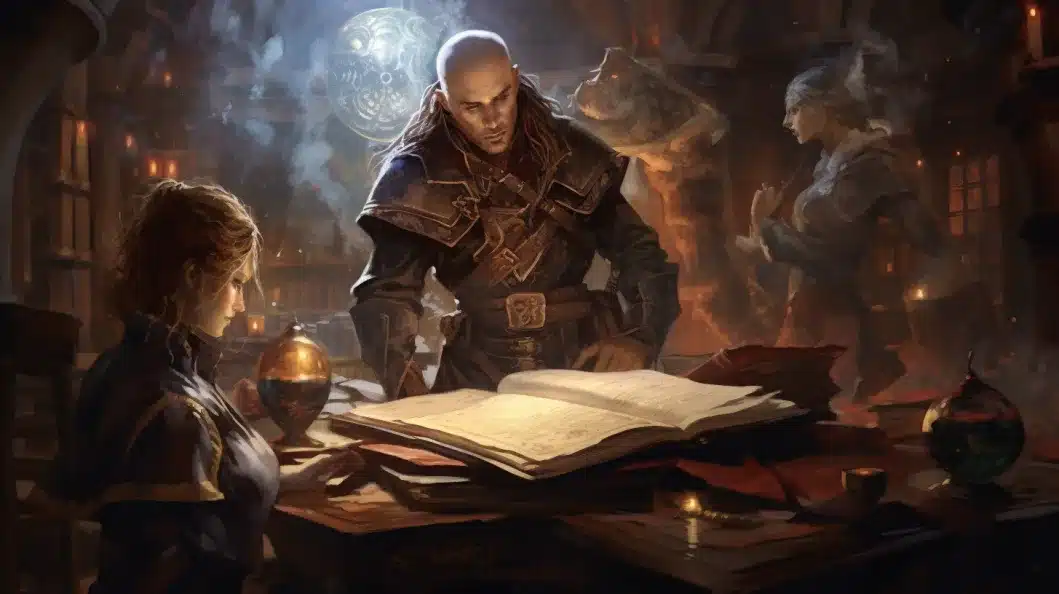
As a seasoned Dungeon Master, I’ve discovered the magic of well-integrated Non-Player Characters (NPCs) in Dungeons & Dragons 5e.
They’re not just faceless stat blocks or scripted encounters; they’re living, breathing characters with their own goals, motivations, and personalities. And when done right, they can bring your game world to life in a way that’s truly immersive and unforgettable.
In this blog post, we’ll dive into the world of NPCs and explore how to create and integrate them into your game in a way that elevates your storytelling and enhances the player experience. We’ll cover everything from character creation to roleplaying techniques, and we’ll provide plenty of tips and tricks along the way.
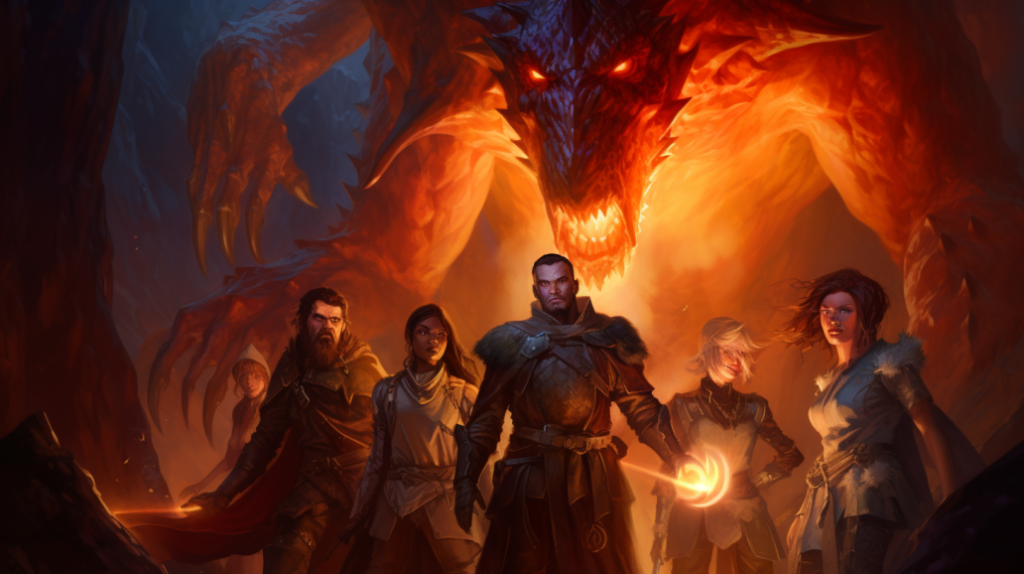
NPCs in Dungeons & Dragons 5th Edition Key Takeaways
Non-player characters (NPCs) are essential for creating a dynamic and immersive world in D&D 5e. They can serve a variety of purposes, from providing quest hooks and information to offering companionship and support. Well-designed NPCs can bring the story to life and create memorable experiences for players.
Here are some key takeaways about the importance of NPCs in D&D 5e:
NPCs bring the story to life : NPCs are the characters that players interact with most often, and they can help to create a sense of place and atmosphere in the game world. By designing NPCs with unique personalities and motivations, DMs can create a more believable and engaging world for players to explore.
NPC classification is important for enhancing the gaming experience. There are many different types of NPCs, each with their own role to play in the game. Some common NPC classifications include:
Quest givers: These NPCs provide players with quests and missions to complete. They can be found in a variety of places, such as taverns, guild halls, and temples.
Allies and companions: These NPCs can join the party on their adventures and provide support in combat and other situations. They can be found through roleplaying, hiring, or by completing quests.
Villains and antagonists: These NPCs oppose the party and try to thwart their plans. They can be found anywhere in the game world, and they can range from minor inconveniences to major threats.
Well-designed NPCs can provide important plot twists and lifelines : NPCs can be used to surprise and challenge players in a variety of ways.
For example, a trusted ally might betray the party, or a seemingly insignificant NPC might turn out to be the key to completing a quest. NPCs can also provide players with lifelines, such as healing them in combat or giving them important information.
NPCs can have both temporary and long-lasting impacts on the game : Some NPCs may only appear once or twice, while others may become recurring characters or even permanent members of the party. The relationships that players develop with NPCs can have a significant impact on the story and the overall gaming experience.
Understanding NPC Role in D&D 5e
Non-Player Characters (NPCs) are essential to any Dungeons & Dragons game. They are the world that the player characters (PCs) interact with, and they can play a variety of roles in the game, from providing information and assistance to serving as adversaries or mentors.
Classification of NPCs
NPCs can be classified in a variety of ways, including by their relationship to the PCs, their role in the story, and their lifespan.
Relationship to the PCs: NPCs can be friends, foes, or neutrals. Friendly NPCs can provide the PCs with information, assistance, and even quest hooks. Foe NPCs can provide the PCs with challenges and obstacles to overcome. Neutral NPCs may be indifferent to the PCs, or they may have their own agendas that may or may not align with the PCs’.
Role in the story: NPCs can also be classified by their role in the story. Some NPCs may be essential to the main plot, while others may play minor roles or simply serve as filler.
Lifespan: NPCs can also be classified by their lifespan. Some NPCs may only appear for a single session or quest, while others may remain a part of the game for months or even years.
The Importance of Understanding NPC Roles
Understanding the role of NPCs is important for a variety of reasons.
First, it can help the Dungeon Master (DM) to create a more engaging and immersive world for the players. When NPCs are well-developed and believable, they can help to draw the players into the story and make them feel like they are truly part of the world.
Second, understanding NPC roles can help the DM to create more challenging and rewarding encounters for the players. When NPCs are used effectively, they can provide the players with both opportunities and challenges, helping to create a more dynamic and exciting gaming experience.
Third, understanding NPC roles can help the DM to better manage the game’s pacing and flow. When NPCs are used strategically, they can help to keep the game moving forward and prevent the players from becoming bored or frustrated.
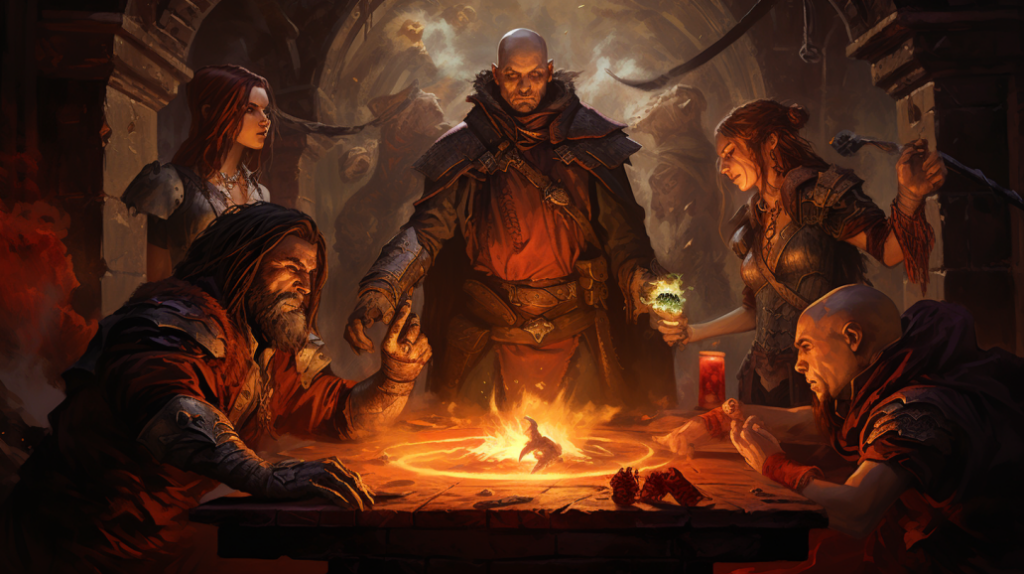
Designing Diverse and Dynamic NPCs
Designing diverse and dynamic NPCs is an essential part of creating an immersive D&D experience. NPCs bring the world to life and provide players with opportunities for interaction, exploration, and conflict. By creating NPCs that are diverse and dynamic, you can create a more inclusive and engaging game for everyone.
Start with their story
Every NPC should have a rich backstory that informs their unique persona. What are their motivations? What are their goals? What are their fears? The more you know about your NPCs, the more realistic and believable they will be.
Diversify your characters
A diverse cast of NPCs will make your world feel alive and varied. Include characters of different races, genders, sexual orientations, and abilities. This will help to create a game that is inclusive and welcoming for all players.
Focus on emotional complexity
Your NPCs should be more than just walking plot devices. They should be complex individuals with their own desires, fears, and dreams. This will make them more relatable and memorable for players.
Allow for growth
NPCs should not be static characters. They should evolve over time, reflecting the dynamic world around them. This could mean changing their goals, their motivations, or even their appearance. By allowing your NPCs to grow, you can create a more engaging and immersive game experience for your players.
Crafting Non-Player Character (NPC) Background Stories
NPC backstories are important for a number of reasons. First, they help to create characters that feel more real and believable. When players know about an NPC’s past, they are better able to understand their motivations and actions. This can make the NPC more relatable and engaging for the player.
Second, NPC backstories can be used to drive the plot forward. For example, a player might be tasked with helping an NPC to achieve a goal that is related to their backstory. This can give the player a sense of purpose and make them feel more invested in the story.
Finally, NPC backstories can lead to unexpected twists and turns in the narrative. This can keep players guessing and make the game more exciting. For example, an NPC who initially appears to be a friend might turn out to be a traitor, or an NPC who seems to be unimportant might actually be the key to defeating the villain.
Overall, developing detailed backstories for NPCs is a great way to improve the quality and engagement of a game. By taking the time to create well-rounded characters, game designers can create a more immersive and rewarding experience for their players.
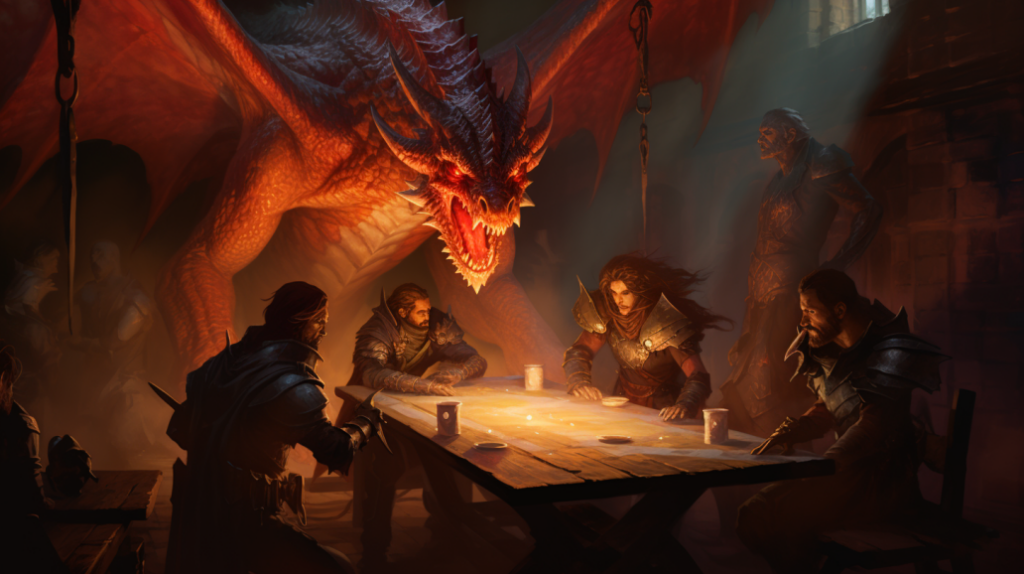
Developing NPC Histories in D&D 5e
A well-developed NPC history can enrich your gaming experience in a number of ways. It can make your NPCs more relatable and believable, giving players a better understanding of their motivations and goals. It can also add depth to your campaign world, creating a more immersive and cohesive experience.
Here is a four-step approach to developing NPC histories:
- Devise NPC mythologies : This step involves using your imagination to create a rich and compelling backstory for your NPC. What legends or myths surround them? Are they fabled warriors, or the offspring of gods? Perhaps they are cursed by a powerful magical artifact, or destined to play a pivotal role in some great prophecy.
- Sketch NPC family dynamics This step helps to add depth and complexity to your NPC’s character. Are they bound by familial love, or embroiled in bitter feuds? Do they have siblings, parents, or children? What are their relationships like?
- Map out formative experiences : This step is about shaping your NPC’s personality. What significant events shaped their perspective? Did they witness a traumatic event? Did they overcome a great challenge? Did they make a critical mistake? Their formative experiences will help to define who they are and what they value.
- Plot their motivations : What drives your NPC to act? What are their deepest desires or fears? What do they hope to achieve in life? Once you understand their motivations, you can start to think about how they might interact with the players and how they might impact the campaign.
Taking the time to develop your NPC histories will pay off in the long run. Your players will appreciate the extra effort, and your game will be all the richer for it.
NPC Personalities and Motivations
NPCs with well-defined personalities and motivations are essential to a compelling and immersive gaming experience. Players are more likely to engage with and care about NPCs who feel like real people, with their own unique quirks, emotions, and goals.
Personality refers to the set of traits that make a character unique. This can include their sense of humor, their temperament, their mannerisms, and their worldview. Motivations are the reasons why a character does what they do. What are their desires? What are they afraid of? What are they working towards?
By incorporating personality and motivations into your NPCs’ backstories, you can create characters that are both believable and memorable.
For example, you might create an NPC who is a sardonic wit to mask their insecurities, or an NPC who uses humor to lighten tense situations. You might also create an NPC who is easily flustered, or an NPC who has a fiery temper.
By giving your NPCs a range of emotions and allowing them to react to situations in a way that is consistent with their backstory, you can create characters that players can relate to and care about.
For example, if an NPC has just lost a loved one, they might be grieving or angry. Or, if an NPC has just achieved a major goal, they might be overjoyed or relieved.
In short, the more real and believable your NPCs are, the more immersive and engaging your game will be.
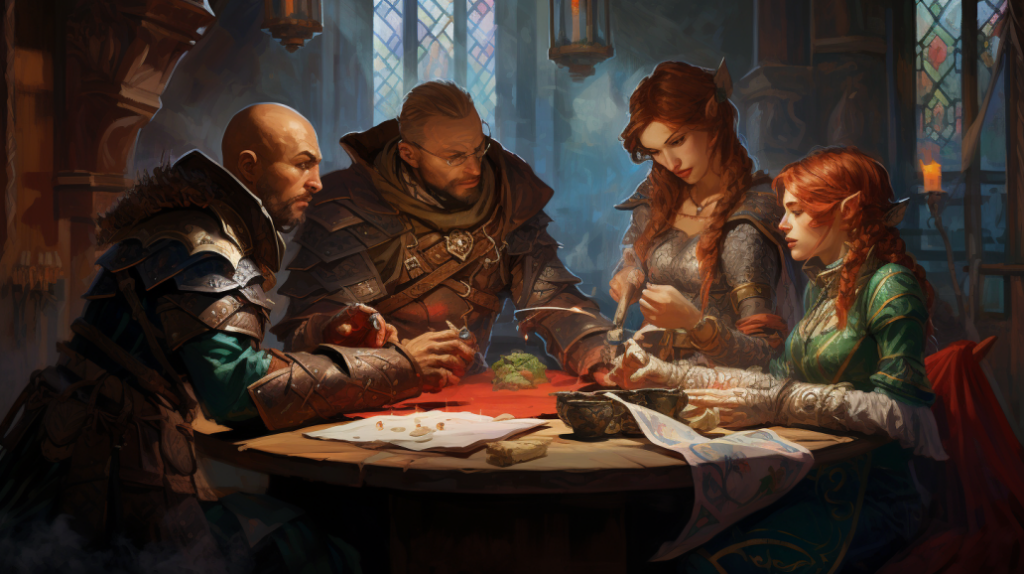
NPC’s Role in Plot
The role of NPCs (non-player characters) in the plot is essential to the overall narrative and immersion of a video game.
NPCs with carefully crafted background stories can create significant narrative impact, possessing a sense of autonomy that makes them feel more like living characters than mere plot devices.
Well-crafted backstories can also elicit empathy from players, strengthening the bond between them and NPCs, while revealing lore that enriches the game’s world.
Here are some of the ways in which NPCs’ backstories can enhance the game experience:
- Narrative impact: A well-written backstory can add depth and complexity to the game’s plot. For example, an NPC who has lost a loved one may be more motivated to help the player achieve their goals.
- NPC autonomy: NPCs with detailed backstories can make decisions based on their history and personality, rather than being mere plot devices. This can make them more unpredictable and challenging to interact with, which can add to the game’s immersion.
- Player relations: A well-crafted backstory can elicit empathy from players, strengthening the bond between them and NPCs. This can make players more invested in the game’s story and characters.
- World-building: NPC backstories can reveal lore about the game world, enriching the player’s experience and immersion. For example, an NPC who is a historian may be able to provide the player with information about the game’s history and culture.
By carefully crafting NPCs’ backstories, game designers can create a more engaging and immersive experience for players.
NPC Interaction Techniques: A Professional Perspective
As we navigate the captivating world of Dungeons & Dragons 5th Edition, we arrive at a critical juncture: NPC interaction techniques. Here, we delve into the art of crafting engaging NPC dialogue, strategies for immersive role-play interactions, and effective NPC engagement methods.
Crafting Engaging NPC Dialogue
When creating NPC dialogue, it is essential to consider the character’s personality, motivations, and goals. Each NPC should have their own unique voice and mannerisms. Use descriptive language and evocative imagery to bring your NPCs to life.
Here are some tips for crafting engaging NPC dialogue:
Use active voice instead of passive voice : This will make your dialogue more dynamic and engaging.
Avoid using clichés and stock phrases : Make your dialogue sound natural and authentic.
Ask open-ended questions : This will encourage your players to interact with your NPCs in a meaningful way.
Use subtext and body language to convey your NPCs’ true intentions : This will add depth and complexity to your interactions.
Immersive Role-Play Interactions
Role-playing is one of the most rewarding aspects of Dungeons & Dragons. When interacting with NPCs, it is important to embody the character you are playing. This includes adopting the character’s voice, mannerisms, and body language.
Here are some tips for immersive role-play interactions:
Listen attentively to your players: Respond to their actions and words in a way that is consistent with your NPC’s character.
Improvise : Don’t be afraid to make things up on the spot. This will help to keep your interactions fresh and exciting.
Be descriptive : Use vivid language to describe your NPC’s surroundings and actions. This will help your players to immerse themselves in the game world.
Effective NPC Engagement Methods
There are many different ways to engage your players with NPCs. Here are a few effective methods:
- Give your NPCs clear goals and motivations. This will help your players to understand how to interact with them.
- Use NPCs to advance the plot : NPCs can be used to provide information, give quests, or create conflict.
- Make your NPCs relatable : Give them flaws and strengths just like your players’ characters. This will help your players to connect with them on a personal level.
Role-play Interaction Strategies
Once you have spent a significant amount of time crafting dialogue, it is time to delve into the core of NPC interaction: role-play strategies. These techniques are essential for character development and NPC improvisation, granting you the freedom to shape your game’s narrative.
Role-play interaction strategies are a set of techniques that game designers use to create more engaging and realistic interactions between players and non-player characters (NPCs).
These strategies can be used to develop complex characters, create dynamic and responsive NPCs, and give players more control over the narrative of the game.
Here’s a concise table with top strategies for role-play interaction:
| Strategy | Description |
| Active Role-play | Engage NPCs in your character’s actions, creating a dynamic interaction. |
| Improvisation | Adapt NPCs’ responses based on your character’s actions or the game’s progress. |
| Emotional Depth | Add emotional layers to NPC interactions to enhance character development. |
NPC Engagement Methods
NPC engagement is a critical aspect of any Dungeons and Dragons (D&D) 5th Edition game. NPCs can provide players with vital information, quest hooks, and emotional connections to the world. By engaging effectively with NPCs, Dungeon Masters (DMs) can create a more immersive and rewarding experience for their players.
Here are some effective NPC engagement methods:
Build NPC Loyalty Dynamics
Players are more likely to care about NPCs that they feel a connection to. DMs can build NPC loyalty dynamics by consistently interacting with NPCs and allowing them to grow through their experiences with the party.
For example, a DM could have an NPC gradually develop a crush on one of the players, or they could have an NPC become increasingly grateful to the party for helping them achieve their goals.
Incorporate NPC Secret Identities
Adding hidden layers to NPCs’ personas can make them more interesting and unpredictable. This can be done by giving NPCs secret goals, motivations, or even double identities.
For example, a seemingly innocent shopkeeper could actually be a spy for a rival faction, or a friendly barkeep could be a powerful werewolf in disguise. Revealing these secrets over time can add suspense and intrigue to the game.
Link NPCs’ Personal Goals with the Party’s Quests
When players have a common goal with an NPC, they are more likely to be invested in that NPC’s success. DMs can link NPCs’ personal goals with the party’s quests by creating opportunities for the two to intersect.
For example, an NPC who is trying to find their missing child could ask the party for help in tracking them down. Or, an NPC who is trying to overthrow a corrupt government could ask the party to join their rebellion.
Craft Emotional Bonds with Players
The most engaging NPCs are those that players have emotional connections to. DMs can craft these connections by giving NPCs relatable personalities, backstories, and motivations.
For example, an NPC could be a grieving father who has lost his wife and child, or they could be a young woman who is struggling to find her place in the world. By giving NPCs emotional depth, DMs can make them more memorable and meaningful to players.
Use NPCs Creatively
NPC engagement is a tool, and DMs should feel free to use it creatively. There are no right or wrong answers when it comes to NPC engagement. The most important thing is to find methods that are fun and engaging for both the players and the DM.
Utilizing NPC Allies and Adversaries
NPC allies and adversaries are essential tools for DMs in D&D 5e. As the game progresses, NPCs should evolve in their skills, attitudes, and relationships with the player characters, just as the player characters themselves do.
Antagonistic relationships are also important, as every great hero needs a worthy adversary to push the story forward and make victories all the sweeter.
To visualize this, we’ve created a table:
| NPC Type | Evolution | Relationship |
| Ally | Grows in power and influence | Deepens and becomes more complex |
| Adversary | Becomes more challenging | Becomes more antagonistic |
| Neutral | May shift to ally or adversary | Changes based on player actions |
Role of NPCs in Campaign Progression
NPCs can play a vital role in campaign progression, their transformations driven by players’ actions shaping the narrative arc. Not mere set pieces, these dynamic entities with shifting loyalties and hidden agendas influence the game’s progression in myriad ways.
- Loyalty Shifts: NPCs may start as allies, but their loyalties can shift if players’ actions conflict with their values. Conversely, an initially hostile NPC might be won over by players’ deeds.
- Secret Agendas: NPCs may have hidden goals influencing their actions. Uncovering these agendas can send the campaign in new, unexpected directions.
- Catalysts: NPCs can trigger crucial campaign events. Maybe an NPC betrayal spurs the players into action, or an NPC’s plea for help leads to a new adventure.
- Reflections: NPCs can reflect the consequences of players’ actions. If players make decisions that harm the world, they’ll see the effects through the NPCs they interact with.
In short, NPCs are not just passive elements in a campaign; they are active participants who can shape the story in dramatic ways. By understanding their motivations and agendas, players can leverage NPCs to their advantage and create truly unforgettable gaming experiences.
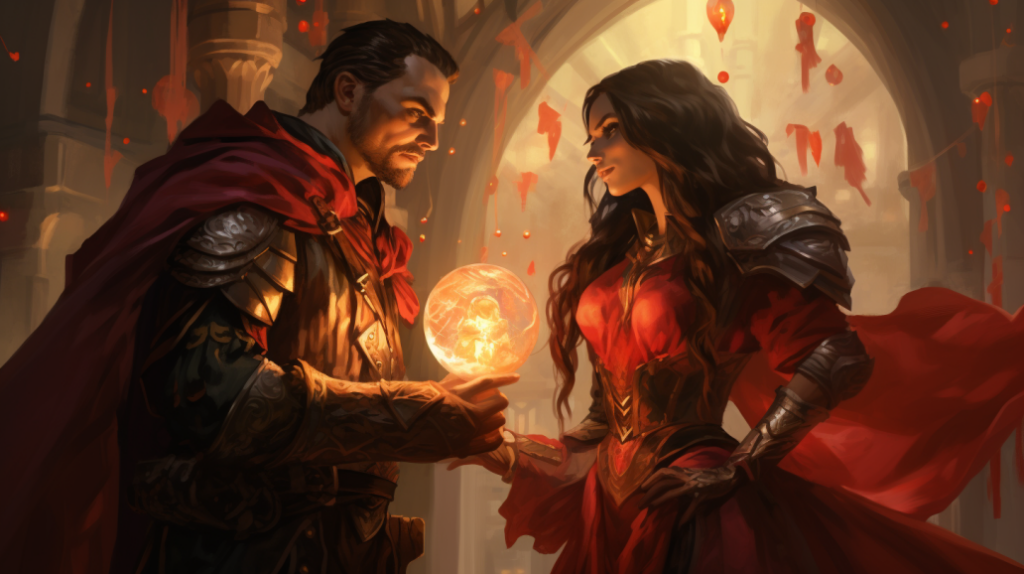
Balancing NPC Power Levels: A Critical Aspect of Maintaining a Fair and Engaging Game Environment
In light of our discussion on NPC roles, let’s explore the critical task of balancing NPC power levels. This delicate dance involves recognizing the potential of NPCs while ensuring they don’t overshadow the PCs.
Doing so effectively can lead to rewarding NPC interactions that enhance the game’s dynamism and depth.
Envision this process as a strategic balancing act between developing NPC skills and avoiding their overpowering of the PCs. Disrupting the game’s balance and frustrating players are the undesirable outcomes of this delicate dance.
Incorporating NPC Motivations
Moving on, let’s tackle the subject of incorporating NPC motivations into your game. It’s a step that adds depth and emotional complexity to your non-player characters (NPCs).
Here’s how you can do it:
1. NPC Emotional Complexity: NPCs aren’t just game pieces. They’re characters with emotions. So, make them feel real. Give them fears, desires, and aspirations. This will add a layer of emotional complexity that will captivate your players.
2. NPC Moral Dilemmas: Challenge your NPCs with moral dilemmas. This not only makes the gameplay more engaging but also provides a window into their motivations. Is the town’s guard loyal to his corrupt mayor or will he side with the rebels?
3. Dynamic Motivations: Remember, motivations can change as the game progresses. An NPC driven by revenge might find peace, altering their goals. Keep it fluid.
4. Motivations Impacting Gameplay: Ensure the NPC motivations have a tangible impact on gameplay. If an NPC is motivated by greed, perhaps they’ll betray the party for the right price?
Incorporating NPC motivations gives your game a rich narrative texture that your players will appreciate and engage with. It’s the freedom to create a truly immersive world.
Adapting NPCs to Player Actions
Let’s now tackle how you can adeptly adapt your NPCs to the actions of your players in the game. It’s a bit like jazz; you’ve got a set piece, but the real magic happens in the improvisation. NPC improvisation is a key element in keeping the game fresh, exciting, and reactive.
Picture this: your players have decided to go off-script, as they’re prone to do. They’re causing a ruckus in the peaceful village you’ve painstakingly planned, sending your carefully laid storyline careening off the rails.
This is the birthplace of Player NPC conflicts, and it’s your golden opportunity to let your NPCs shine.
Have your NPCs react in ways that are consistent with their characters. The timid baker might run and hide, while the brash blacksmith might confront the players.
Their reactions can serve to further the plot, introduce new storylines, or simply deal with the immediate fallout. The key is to adapt, not control. Let the players’ actions guide the narrative.
Be ready to think on your feet. Remember, it’s not just about the destination, it’s also about the journey.
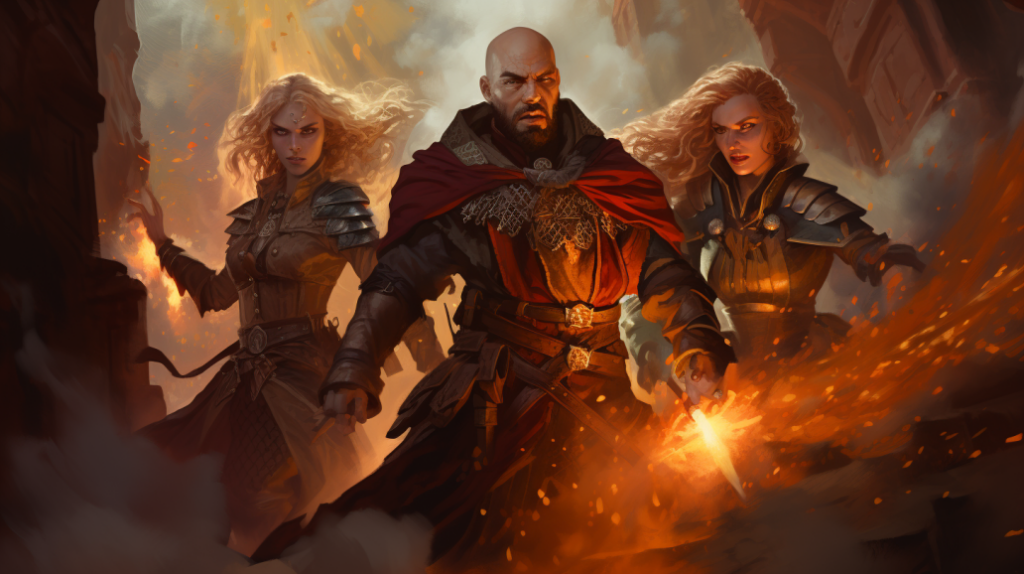
Frequently Asked Questions
How Can I Effectively Use NPCs to Manage Players Who Are Derailing the Game?
I’m using NPCs with strong motivations and developed personalities to guide players back on track. They’re not just tools, but characters who can influence the narrative and engage wayward party members.
How Do I Handle a Situation Where My Players Are More Interested in an Unplanned NPC Than the Main Storyline?
When my players latch onto an unplanned NPC, I use improvisation techniques to weave their story into the main plot. It’s a delicate balance, but it keeps everyone invested without derailing the game.
Can I Use an NPC as a Main Antagonist Without Overshadowing the Players’ Role in the Campaign?
Absolutely, I can use an NPC as a main antagonist. I’ll focus on antagonist development, ensuring a balance between the NPC’s role and the players’ impact. It’s all about maintaining player NPC balance.
What Is the Best Way to Introduce a New NPC Into an Ongoing Campaign Without Disrupting the Flow?
I’d gradually introduce them, unraveling their backstory piece by piece. I’d make sure their personality development fits the campaign’s narrative, ensuring it doesn’t disrupt the flow but enhances the players’ freedom of interaction.
How Can I Keep Track of the Multiple NPCs I’ve Created and Their Various Interactions With the Players?
I’ve found it helpful to use a detailed NPC ledger. It includes personality traits and motivations. I track interactions with players and adjust as needed. It’s an innovative, narrative way to manage my NPC universe.
